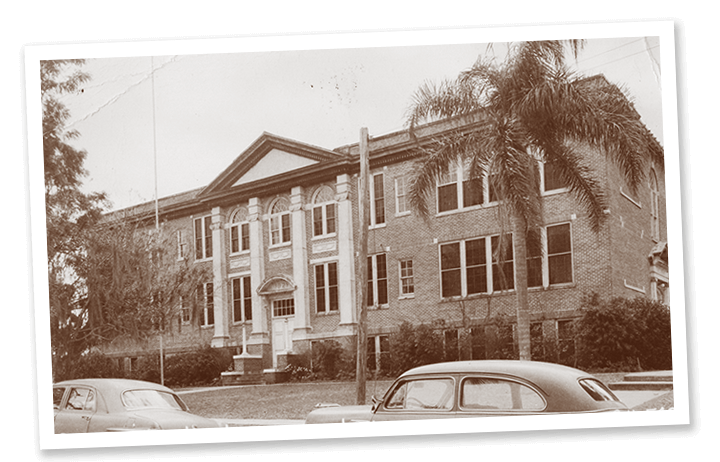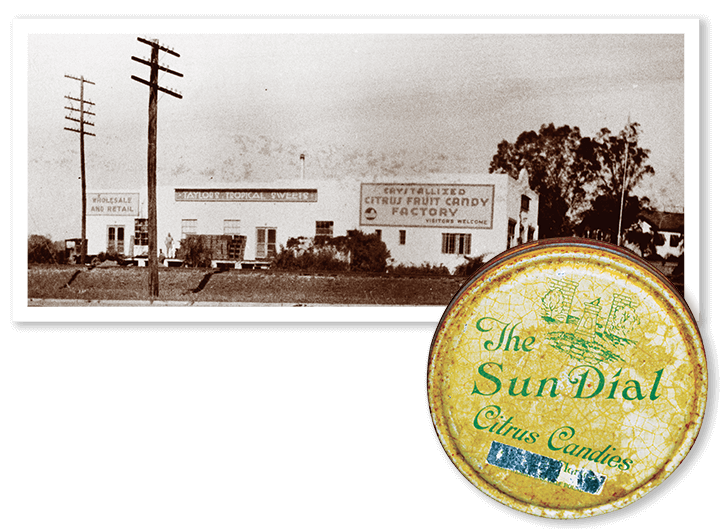A Short History of the City of Davenport, Florida

The most recent gem among Davenport’s treasures is the restoration of the 1927 red brick schoolhouse where four or more generations of Davenport’s longtime residents attended school.
Before 1883, in the center of Florida, on a ridge of rolling hills, crystal clear lakes and beautiful evergreen forests, a new town was about to be born. Two years earlier, most of the interior of Florida was swampy and not suitable for building homes. Friendly Seminole Indians still lived in the area. Hamilton Disston, a wealthy businessman from the north, bought four million acres of land from the government and dug canals from Lake Tohopekaliga in Kissimmee to Lake Okeechobee, and canals to Fort Lauderdale and Fort Myers. This created many acres of rich farmland.
Pioneers began to come. One family, Judson and Sallie Jacob, known as Uncle Jake and Aunt Sallie, along with a family friend, Uncle Dobey, settled close to Horse Creek and the surveyed railroad grade. On January 23, 1884, the last railroad spike was in place and trains began to bring in more settlers. Aunt Sallie requested a Post Office for the new settlement. It was approved on March 13, 1884 and named Horse Creek by Aunt Sallie, since the first post office was a South Florida Railroad boxcar on the sidetrack by Horse Creek. Aunt Sallie was the first postmaster and Uncle Dobey was the telegrapher. On October 25, 1886, Aunt Sallie’s request to change the name to Davenport in honor of Fort Davenport was approved by the Post Office Department in Washington D.C. Fort Davenport (built in 1838) was one of nineteen forts in middle Florida that were commanded by Colonel William Davenport and built during the Second Seminole Indian War. Fort Davenport was twelve miles northwest of the present-day Davenport. It was decommissioned after the Third Seminole Indian War ended in 1858.
The small settlement along Horse Creek began to grow; new homes, hotels and stores were built. On a cold, windy night in 1900, sparks flew from a wood burning train and burned down the town. The courageous settlers rebuilt about a mile south of the Horse Creek settlement. The boxcar post office was moved to the new location until 1912, when the first wooden post office was built next to the small lake now known as Lake Play. At that time, the lake was called Park Lake. With all the pine forests in Davenport, the naval stores industry arrived in Davenport, attracting the first African American settlers. They were called naval stores due to the turpentine and other products from pine trees being used in the ship-building industry. The first wooden schoolhouse was built, and the citrus industry was a thriving business, bringing a second wave of settlers. On March 11, 1915, Davenport became an incorporated town with a mayor.
Through the 1920’s, Davenport was a beautiful city with the exquisite Holly Hill Inn, a golf course, an airport, home lots planted with citrus trees, sidewalks, electricity and employment for everyone. Plans were drafted for a population of 30,000 residents. Unfortunately, Davenport, like the rest of the United States, overspent and the nation was thrown into the Great Depression. With help from some of the local businesses, Davenport was able to pay off the debts. The Public Works Program built Davenport’s Community Center (Peter Rust Civic Center) and the pool (now replaced with the Commissioner’s Chambers). The citrus candy industry in Davenport was created by two ladies who experimented with the local citrus products at home and sold them in their Tea Room in The Mart, a retail store building that is still in use today. Nearly one hundred years later, after two moves, several different owners and some name changes, the candy shop is still selling the same candies.
Davenport’s hometown feeling attracted many families with the lavish May Day Festivals, Christmas in the park with Santa and other traditional holidays. Davenport became a city in 1985 with a city manager as well as a mayor. Davenport is proud to have been the home to a Medal of Honor recipient, Sgt. James Hendrix. Many of the original residential and commercial structures built in the downtown area are in the National Historic Registry district. The inner city is home to many nice parks and recreational facilities. The most recent gem among Davenport’s treasures is the restoration of the 1927 red brick schoolhouse where four or more generations of Davenport’s longtime residents attended school. People are still discovering that Davenport is a great city for raising a family as well as close enough to shopping, churches and entertainment.

The citrus candy industry in Davenport was created by two ladies who experimented with the local citrus products at home and sold them in their Tea Room in The Mart, a retail store building that is still in use today. Nearly one hundred years later, after two moves, several different owners and some name changes, the candy shop is still selling the same candies.

